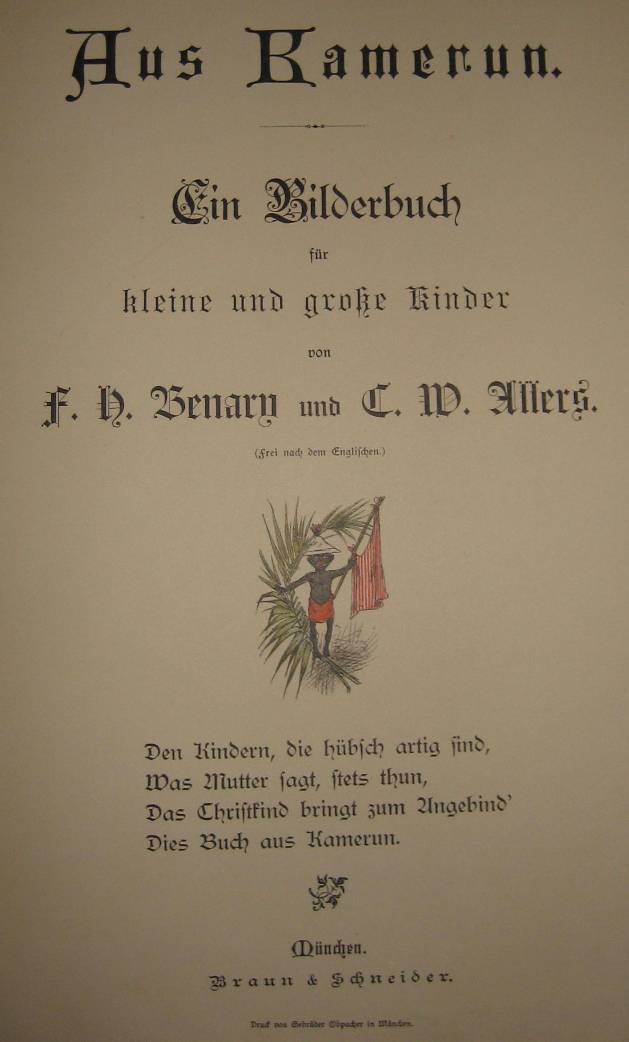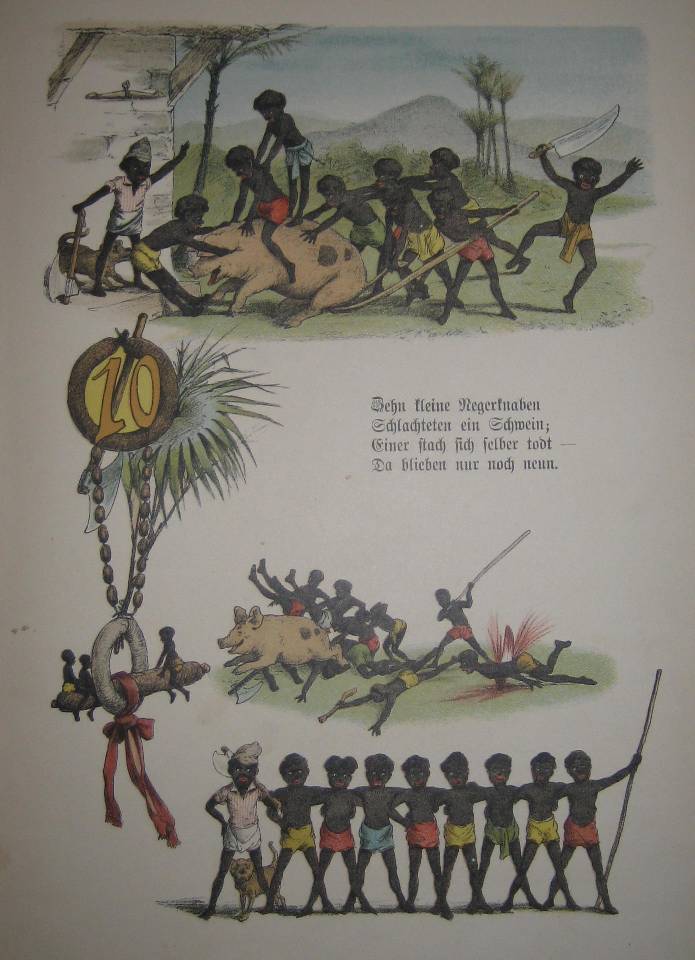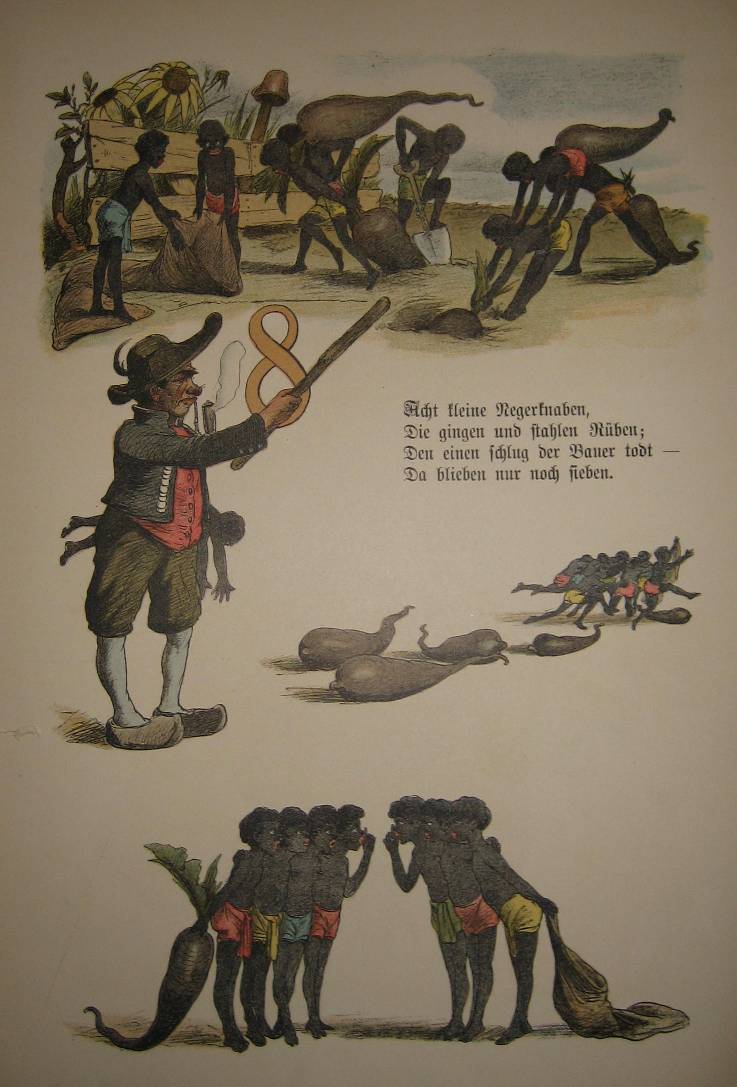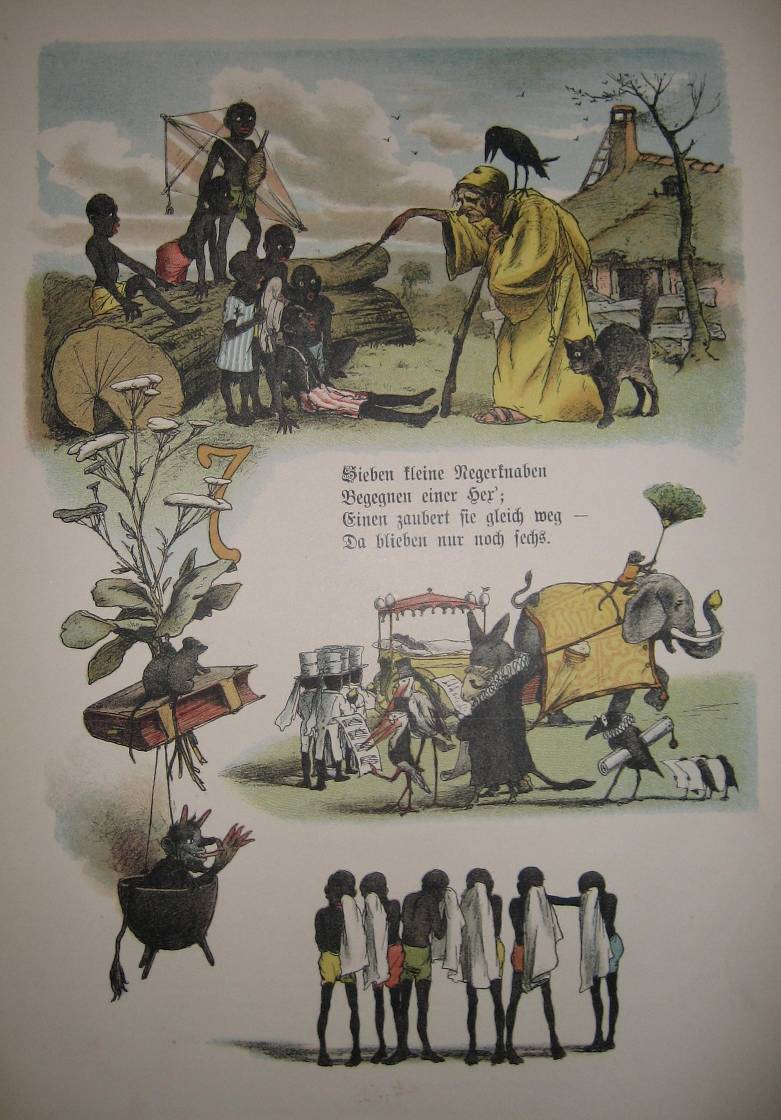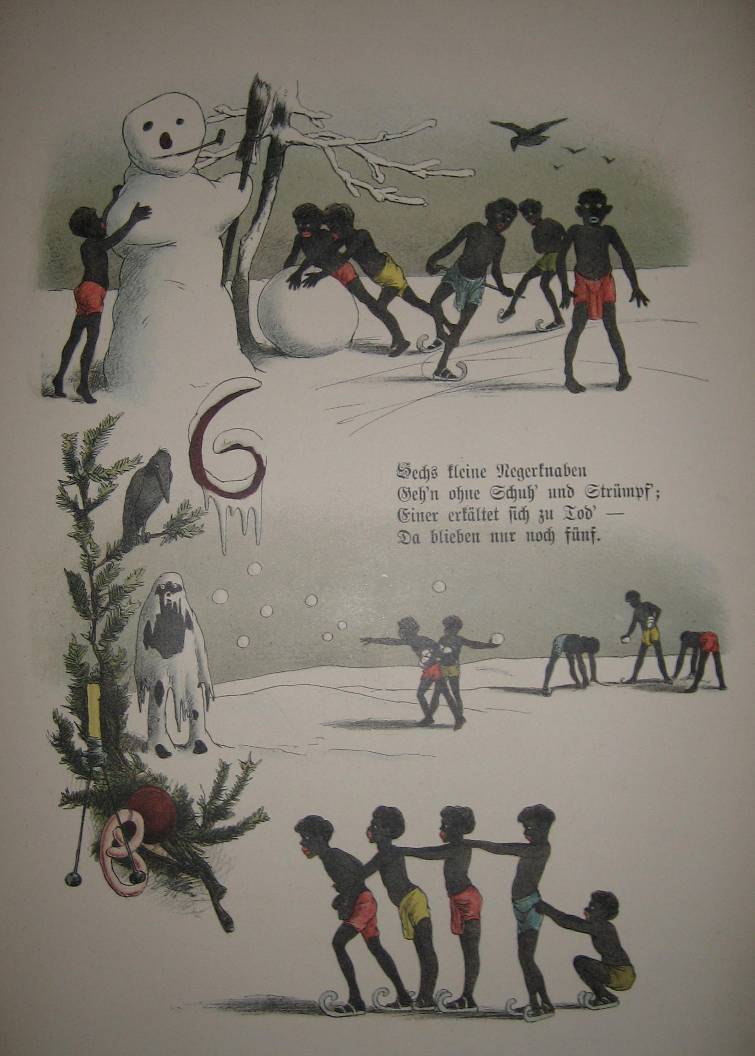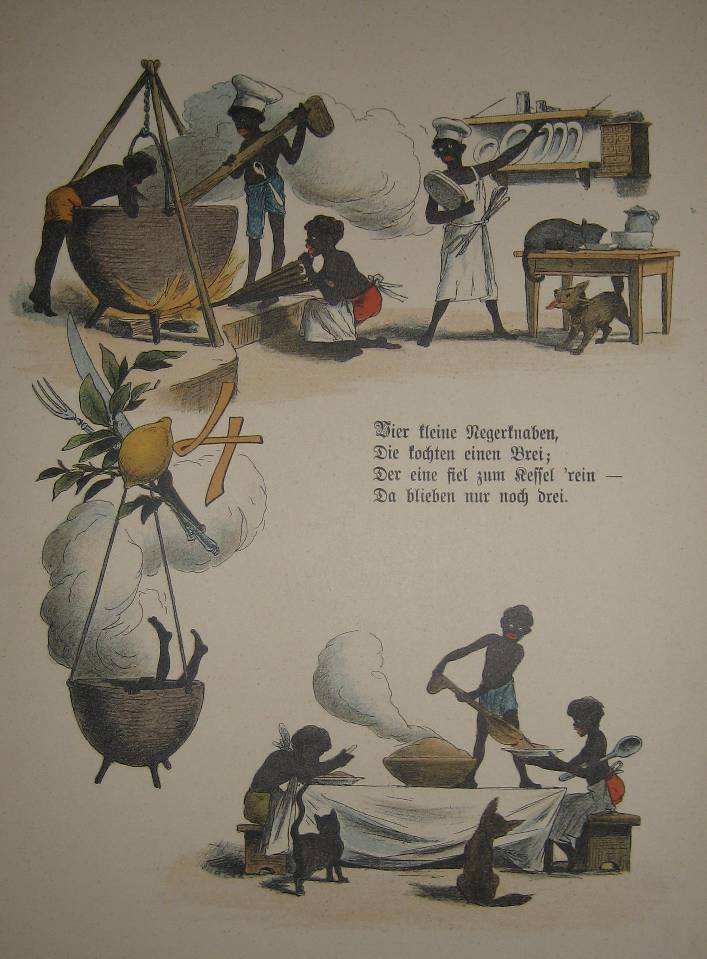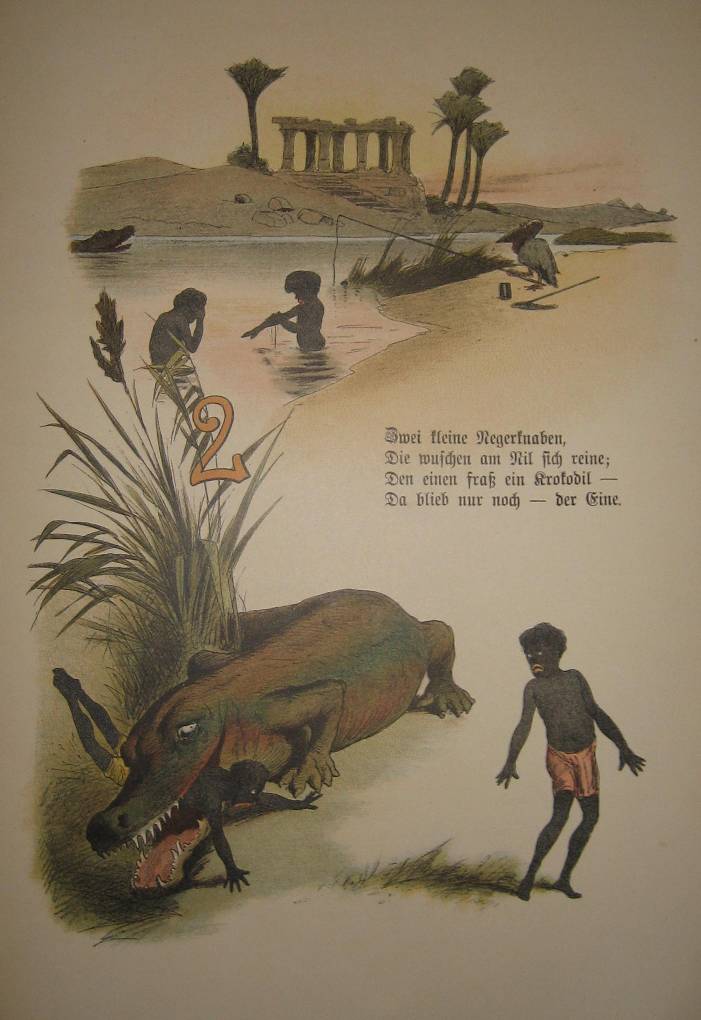Abstract
From the latter third of the nineteenth century, in the context of
the “scramble for Africa” and the development of a new consumer culture
based on catchy images that flattered white European audiences,
stereotyped images of Africans became increasingly commonplace in books
and toys aimed at young Germans. Such images served to educate in two
senses. They were used to teach particular skills (how to read, how to
count, how to perform social roles), and they also served to instruct
Germans on their inherent superiority over the world’s non-white
inhabitants. This example is the earliest known German adaptation of a
hit American minstrel song from 1868 entitled “Ten Little Injuns,” in
which the ten characters whittle themselves down to none by dying or
otherwise disappearing in various gruesome ways. The song was soon
adapted as “Ten Little Negroes,” in which form it became a staple of
minstrel performances in the U.S. and the U.K. In 1885, the German
author F. H. Benary and illustrator C. W. Allers re-wrote the rhyme to
capitalize on Germany’s recent colonial acquisitions and published it in
their children’s book, Aus Kamerun
[From Cameroon].

